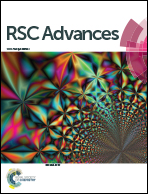Tribological and electrochemical properties of Cr–Si–C–N coatings in artificial seawater
Abstract
Cr–Si–C–N coatings were deposited on Si(100) wafer and stainless steel 316L by using unbalanced magnetron sputtering via adjusting trimethylsilane (Si(CH3)3H, or TMS) flow, and their microstructure and hardness were analyzed by using EDS, SEM, XRD, XPS and nano-indenter. The electrochemical behavior of coatings in seawater were measured by using a CHI660D electrochemical workstation, and the tribological properties of coatings sliding against SiC balls in artificial seawater were investigated by using ball-on-disk tribometers. The results indicated that there were nanocrystallites of Cr(C, N) crystal and amorphous phases such as a-Si3N4 and a-C(a-CNx) in the CrSiCN coatings. With an increase in the TMS flow, the hardness of CrSiCN coatings first increased to the maximum value of 21.3 GPa, and then decreased to 13 GPa. As compared with the CrCN coating, the CrSiCN coatings exhibited a lower friction coefficient. The pitting corrosion only appeared on the wear tracks, and therefore the mechanical wear and wear-accelerated corrosion were the main material deterioration mechanisms in seawater. The impedance modulus and phase value became high in the low frequency range with an increase in the TMS flows. Because the amorphous phase of silicide dispersed in the grains could effectively improve the density of the coatings, thus the coatings deposited at higher TMS flows exhibited better corrosion resistance.


 Please wait while we load your content...
Please wait while we load your content...